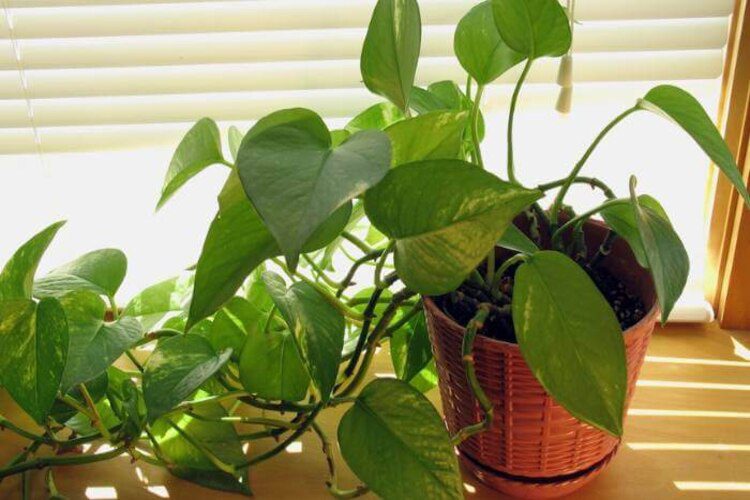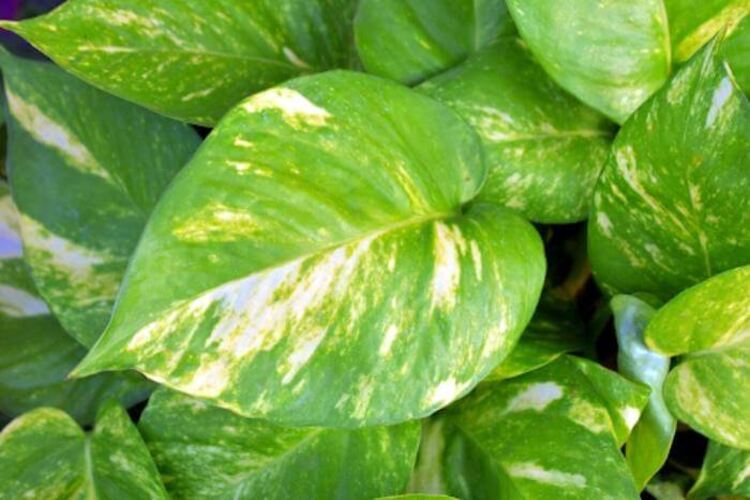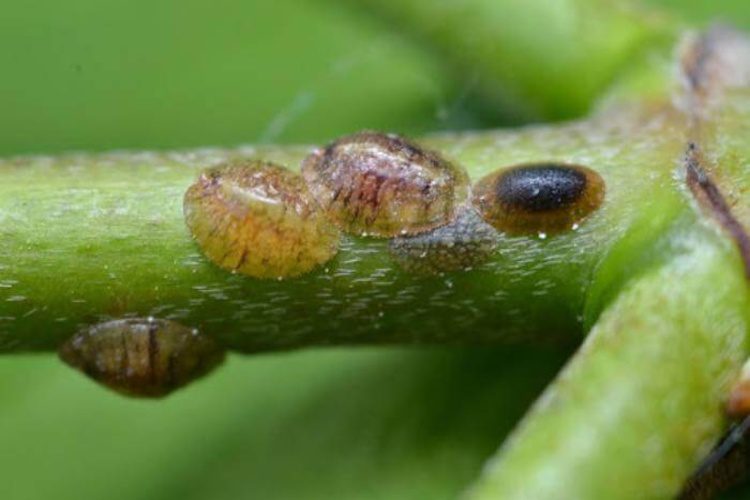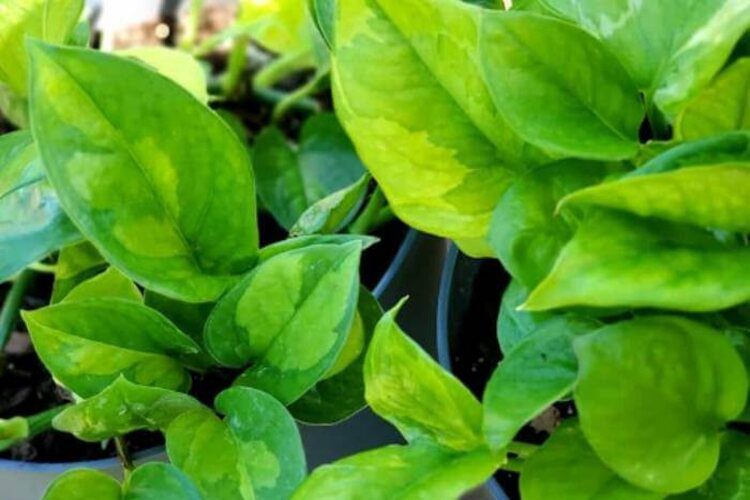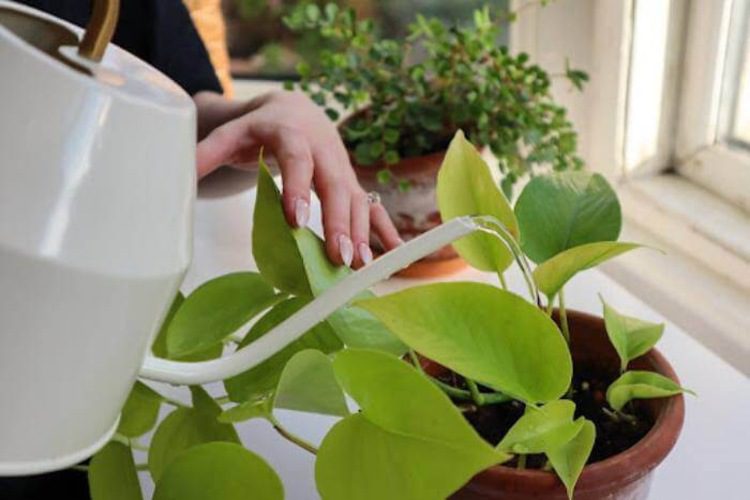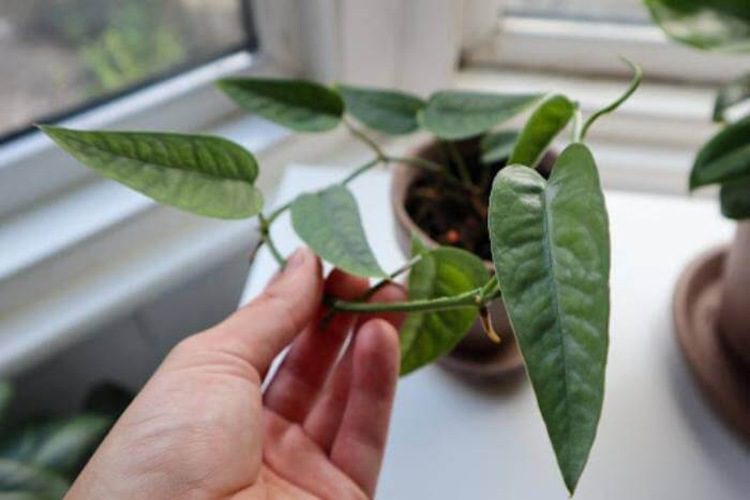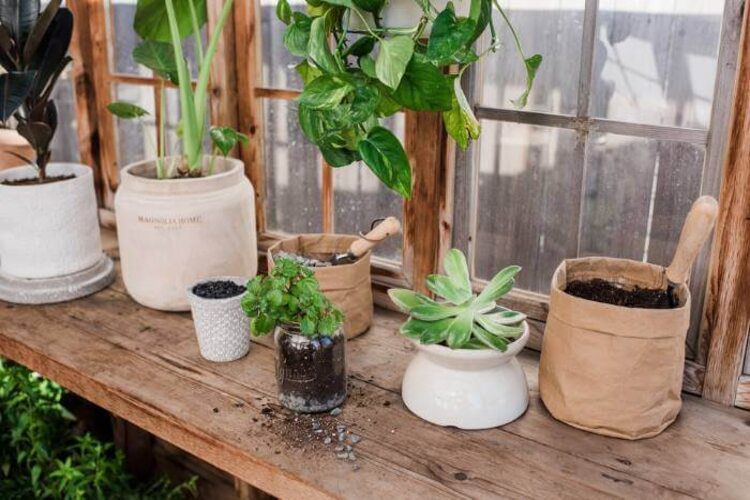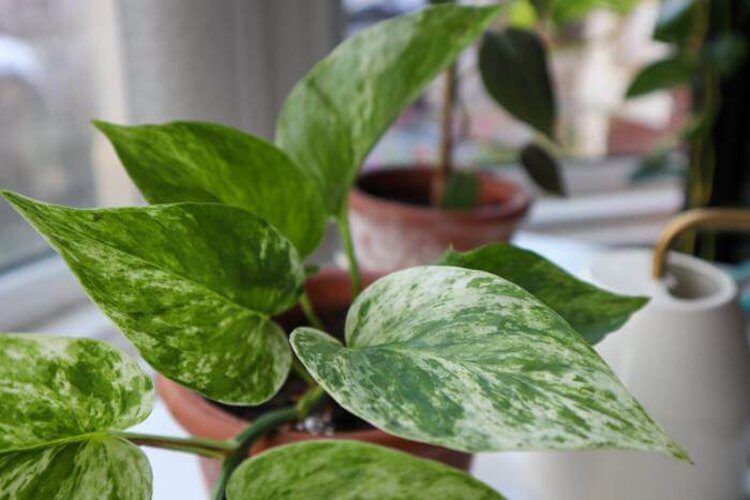Why Are My Satin Pothos Leaves Curling? (4 Main Causes)
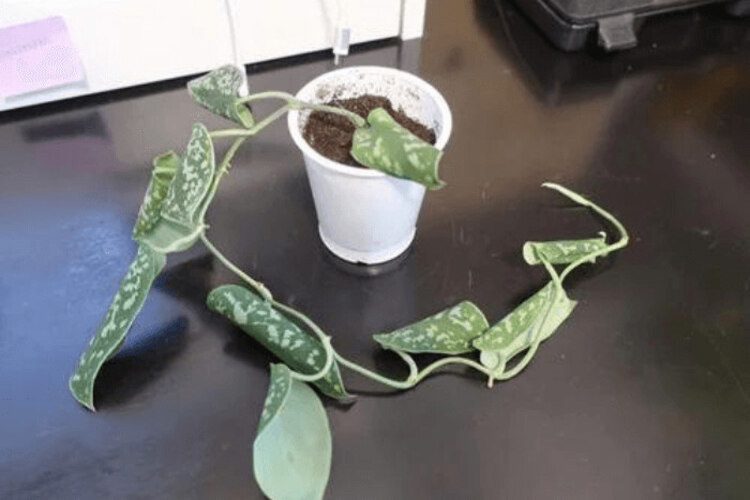
Did you purchase a Pothos because you thought it would be independent and have minimal maintenance? When encountering the Silver Satin Pothos leaves curling inward, we experienced similar problems. Let’s explore the causes of this curling and wilting.
Causes Of Satin Pothos Leaves Curling
You’re Not Watering Enough
Your Pothos’ long-term health may be significantly impacted by how much water you provide. Underwatering is a common mistake made by people new to caring for houseplants. They believe it to be nearly unkillable because it is a low-maintenance houseplant. Your Pothos plants will promote curling leaves to retain moisture if they receive little or no water. You must water them at least enough so the soil is moist to approximately 1′′ or so deep. They usually grow the fastest when you keep your Pothos’ soil damp (but not drenched).
Depending on a few factors, you should water them once a week or two. Keep track of the time it takes your Pothos’ soil to dry up after a watering session and create a reminder or timetable for it. Like most indoor plants, Satin Pothos also needs more water in the summer than in the winter, so be sure to modify your watering routine according to the weather and the passing of the seasons.
You’ve Watered Too Much
The roots of your Pothos could decay if you overwater them. Overwatering causes soggy soil, so Pothos cannot endure staying in moist soil for very long. All the nutrients and water your Pothos needs to survive can’t get to the vine stems and leaves. The plant is essentially being “underwatered by overwatering.” Placing the Pothos in containers with drainage holes will help you prevent the overwatering issue. If you don’t have those, just give your plant a drainage tray. Enables water to drain from the soil swiftly and away from your plant’s pot.
It is a positive indicator if only the leaf tips appear to be curling downward. It demonstrates that the root rot remains in its initial stages and that your priceless plant is still salvageable. Remove your Pothos from its container and look inside its roots. If the root ball indicates some unhealthy parts, simply cut all the rotting, brown-coloured roots out with a pruner or pair of scissors. Wash your tools and replant the Pothos in new soil.
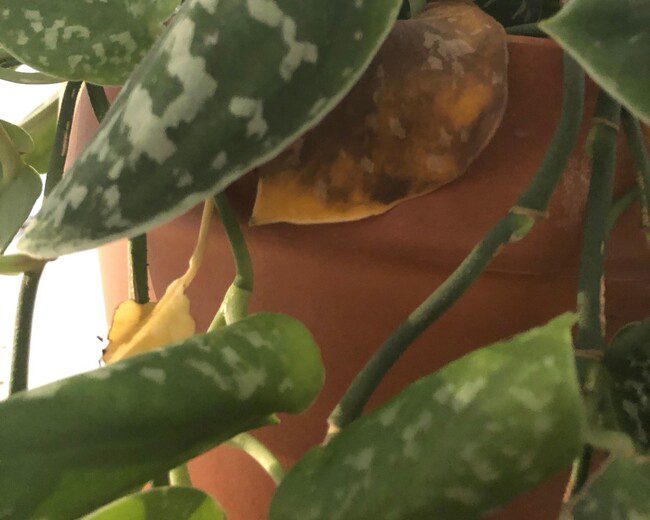
It Is Too Warm
If the room is excessively hot, you will also notice that your Pothos plant’s leaves begin to curl. If the temperature isn’t between 65 and 85ºF (18 and 29ºC), the foliage will begin to curl downward at the tips. Outside this range, the temperature stresses your plant more and slows its development. Your plant’s exposure to heat is significantly influenced by its location. For instance, keep your Pothos plant out of the sun. Similar to Silver Ann Pothos, another typical mistake is positioning it where there is constant heat reflection or where there is insufficient airflow, causing the temperature to rise in the middle of the day.
Too Much Or Too Little Light
Your Pothos plant should have broad, flat leaves that naturally develop towards the light source if it is healthy. However, it is a warning that the leaves do not receive enough natural light if they reach or curl towards the light. Placing the potted Pothos in an area that receives more natural light during the day may help to solve this issue. Overexposure is indicated if the foliage is curling away from the light source. Simply place the potted Pothos in a location that gets less direct sunlight.
How To Fix Satin Pothos Leaves Curling
Giving Pothos some more attention and a general effort to stop leaves from curling. If you notice curled leaves, the plant is unhappy about some growing conditions.
Identifying the root cause first might help. Here is a brief guide to curing Pothos plants’ curled leaves.
- Water it just enough: Too much or not enough water can produce a leaf curl. Therefore, keep the soil from drying out completely or getting drenched.
So, before adding more water, constantly inspect the soil. Before watering again, let the top two inches of soil dry off.
- Address root rot: Overwatering is frequently the culprit. When roots become rotted or injured, they can no longer absorb moisture and nutrients from the soil. Your Pothos’ leaves start to curl. The only attempt to prevent root rot on a plant would be to repot it in new, dry soil.
- Enough humidity: Enough humidity is required for Pothos to flourish. In addition to slowing growth, low humidity can cause foliage to curl, turn yellow or brown on the tops, and become crispy. Maintain a humidity level of at least 40%. Get a humidifier or mist the plant if it falls below this level.
- Proper lighting: Pothos can have problems with both too much and too little light. Try to maintain it in an area that receives medium-to-bright light.
- Avoid overfeeding: While fertilizer is necessary for your Satin Pothos to grow effectively, avoid overfeeding since this raises the danger of fertilizer burn because of the buildup of salts in the soil. Oversalination will eventually harm the plant’s roots, causing leaf curls.
- Maintain optimal conditions: Maintain optimal conditions between 65 and 85 degrees. Avoid excessive heat, which causes the plant to dry out and get dehydrated and also causes the leaves to curl. Also, avoid extreme cold because it can harm your Pothos.
- Regularly check for pests: Regularly check for pests because they can do a lot of harm to plants. Treat any that you find right away.
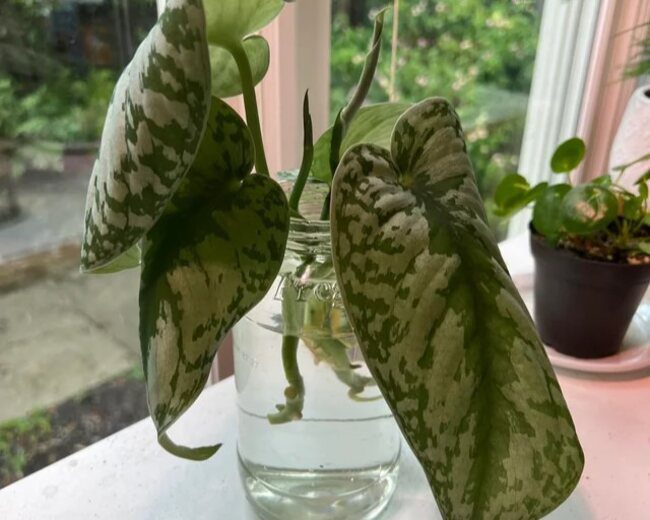
Prevent Leaves from Curling
The following advice can help you keep the leaves of the Satin Pothos healthy.
Keep The Appropriate Temperature
Keep these at the preferred temperature of 18 to 30 °C, or 65 to 85°F. Guard against rapid and jarring temperature fluctuations. Keep them from the direct, searing sun beams from windows and the strong breeze from air conditioning, especially during the hottest summers. Avoid placing the plant close to heaters and the fireplace throughout the winter.
The Proper Way To Water
Only water the plant when the soil’s top becomes dry. Examine the soil’s top 2 inches. It is time to water your plant if it is entirely dry. Water your Pothos well until you notice water draining from the pot’s bottom. Remember that plants require more water in the summer than in the winter due to the higher temperatures.
Avoid tap water because it could be salty. Employ distilled water. Put the plant container in a water tub for a short while to prevent overwatering. In this manner, the roots at the bottom only consume the necessary amount of water.
Prevent Infestation Of Insects
To keep insects at bay, regularly wipe the leaves with alcohol. You can also use water if you don’t have any rubbing alcohol on hand. Lightly mist the area with insecticide occasionally. Remove the brown or yellow leaves. The same is true for any brown spots that appear on the leaves. Must be removed as soon as possible so they don’t become a pest breeding ground.
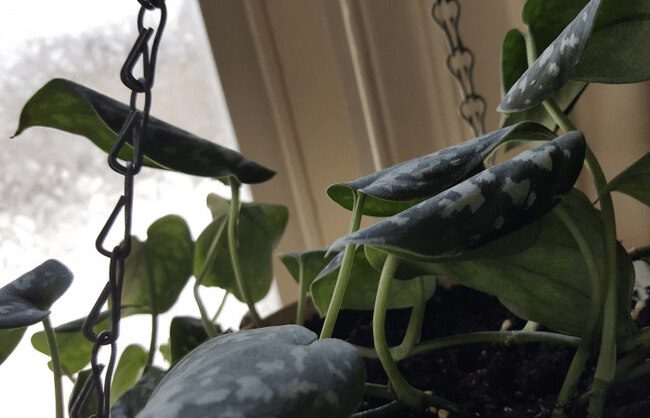
Effectively Combat The Root Rot Disease
Move the Satin Pothos away from the remainder of your houseplants as soon as you suspect root rot. It shouldn’t spread to other houseplants, of course. Check the roots, then wash them with water. Replace the root ball’s black or brown decaying area with the fresh medium while repotting the healthy roots. You’ll notice it waking up in a few weeks.
Take cuttings of the plant’s healthy branches if you discover the whole root ball to be soft and decaying before throwing it away. In both soil and water, silver Satin Pothos is simple to root. Place the cuttings in a pot of new soil or a jar of water. New roots will form within a week, and the plant should start flourishing.
Verify The Light Exposure
Watch for the leaves of the Pothos. They ought to be flat. The light exposure needs to be adjusted if they are wrinkling inward or outward. Put the Satin Pothos inside your home in a location with plenty of bright indirect light. To ensure that the Satin Pothos receives the same light, rotate it occasionally.
Don’t Feed The Plant Excessively
Before applying the fertilizer to the plant, dilute it in water. To maintain the silvery, satin-like foliage, use nitrogen-rich fertilizer. Create a plant diary and add a new entry after each fertilization of your plant. This is especially helpful if you need to take care of multiple houseplants. In winter, plants are resting, so avoid fertilizing during that time.
Ensure Humidity
For Pothos to flourish, the humidity level must be at least 40%. You can apply the following strategies to keep the space at this moisture level:
- Every day, lightly spray the plant with filtered water in a spray bottle.
- Invest in a room humidifier to keep the air humid.
- Keep your plant in a room with a fair amount of humidity, like the bathroom or a kitchen.
- Pick up a dish and scatter some stones on it. Alongside it, place your Pothos plant and mist them with water. This will enable the evaporation procedure to take place, resulting in the leaves being moist in a natural way.
Select The Appropriate Potting Medium And Pot Size
For the silver Satin Pothos, use the appropriate pot size. Remember that larger pots require more soil, which means they will hold onto moisture for longer. This will exacerbate issues of root rot brought on by overwatering. Because terracotta is a porous material that can absorb excess moisture from the soil and prevent root rot, you might choose to use terracotta pots.
Always choose a pot one size larger when relocating the plant to a larger one. Repot your plant, for instance, from a 4-inch pot to a 6-inch pot. A well-draining soil is preferred for Satin Pothos. If you want to make your potting soil lighter and airier, think about adding more pearlite.
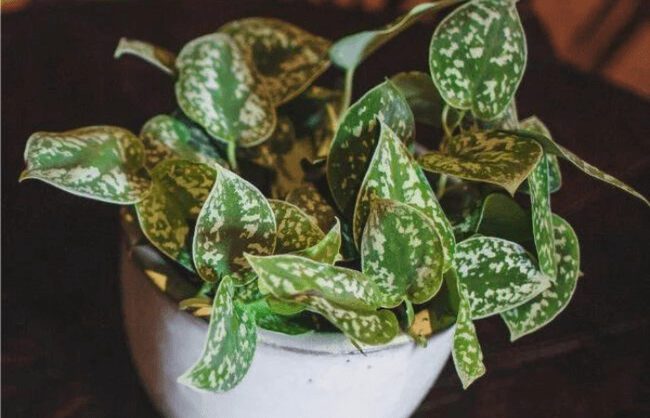
Conclusion
The most frequent causes of Satin Pothos leaves curling include overwatering, underwatering, excessive amounts of direct sunlight, insufficient exposure to light, insect infestations, and heat stress. Fortunately, if you quickly take care of the issue, Silver Pothos will recover fairly well.
The plant’s health can be determined by the color and the way the leaves hang. It shouldn’t be too difficult to save your houseplant, except when it comes to bug invasion. Low-maintenance indoor plants can endure a few days in challenging circumstances.


